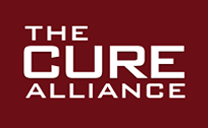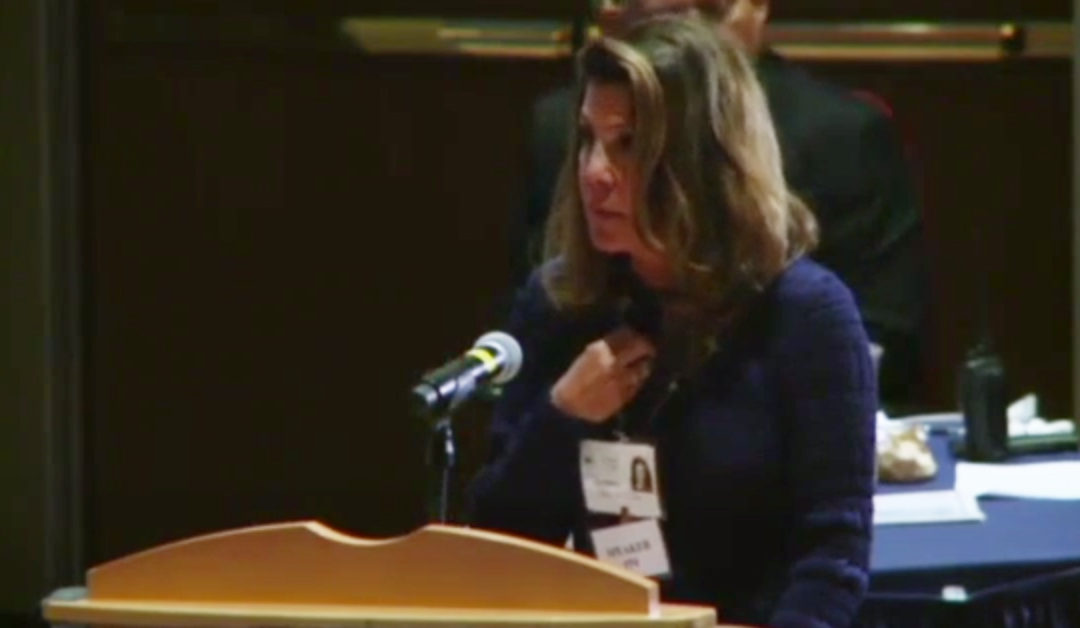Cure Alliance President Shelley Ross Asks FDA to Eliminate Restrictions on Breast Cancer Reconstruction from New Guidelines on Fat Transfer
Thank you for the invitation to speak today as president of The Cure Alliance, a non-profit group of leading translational researchers, surgeons, innovators and those who support our efforts to end human suffering by curing chronic, debilitating and fatal diseases. Our number one goal is to eliminate barriers to discovery and accelerate potential cures from the lab to the bedside.
[CLICK ON ABOVE FOR FULL VIDEO PRESENTATION 9/13/16]
I am not a scientist; most of my career has been as a broadcast journalist. CBS, NBC and 17 years at ABC News where I worked with Diane Sawyer, Peter Jennings, George Stephanopoulos, Robin Roberts and more. As executive producer of Good Morning America I covered four wars and broadcasted live from our Times Square studio during the 9/11 attacks.
Today, I am here from another battlefield: cancer.
In August 2012, I found a tiny lump in my breast that was, indeed, malignant. High fives for early detection, but because of my cancer type plus the discovery of a mutated BRCA gene, I faced six months of chemotherapy followed by a double mastectomy and oophorectomy.
My bilateral mastectomy was April 16, 2013, the day following the bombings at the Boston marathon. (An occupational hazard, I still mark time by news events.) My surgery went well: breast amputations with simultaneous reconstruction — tissue expanders held in place by internal slings made of cadaver tissue that’s been radiated, freeze-dried and repurposed.
Monday, one week after the Boston bombing, I caught another news report on the amazing recovery of the 31-year-old dance instructor whose foot had been blown off. She was sitting up, smiling and talking about when she could start dancing again with a prosthetic.
I could barely move, feeling toxic and weak. I called my surgeon. “How is the dance instructor doing so much better than I?”
She said, “Well, the dancer didn’t undergo five and a half hours of surgery. Her surgery didn’t follow six months of chemotherapy. And, uh, you’re not 31 anymore.” (Cruel, right?)
It turned out that toxic feeling wasn’t related to any of the above. My body had failed to integrate those structural “slings” which had been disintegrating, rotting inside my chest. I was no longer on a garden-variety breast cancer journey.
By May 16th, four weeks after my double mastectomy, I underwent another surgery to remove of all reconstruction material. When I awoke, I learned my chest cavity was sanitized with shower heads for more than an hour. The area now needed to heal.
I can’t really call it “healing.” Without any breast tissue remaining from my collarbone down, there was only one outcome: my skin scarred to my ribcage. Worse, I was no longer a candidate for reconstruction.
Adding to the misery index, as a result of chemo, I suffered multiple tears in the rotator cuffs of both shoulders. (I could not lift my arms.) By now, dressing, washing, combing my hair became a kind of painful kabuki dance.
Trying to heal was exhausting and frustrating. As weeks of pain turned into months, I came to the stark realization: I was disabled.
Until that point fighting cancer involved clear and time-tested decisions. Now I was in uncharted territory.
Incredibly, within our own ranks of The Cure Alliance was a remarkable surgeon in Milan who had invented a simple sterile closed-loop technology to micro-fractionalize one’s own lumpy adipose fat into a fine injectable. No rejection, no infection. When we first spoke he had used it successfully for facial reconstruction, bad knees and shoulders and wound healing. A few months later, he phoned to say: “I have treated a patient just like you and it was a success.”
That’s all I needed. Just one. The risks were mine to take.
On December 30, 2013, in Milan, I had 370cc’s of my own fat drawn from my abdomen and back, then micro-fractionalized and injected into my breasts. This was followed by reconstruction with permanent implants. As a bonus, the surgeon injected 5 cc’s of micro-fragmented fat in one shoulder, 7 in the other. By mid-afternoon I was back in my hotel. Three days later, I attended a birthday party in London. Back home, I felt whole again.
For a long time. I thought the treatment had not worked on my shoulders. It turned out to be a delayed response. After nine months I suddenly realized I could do this. (DEMO lift both arms to the sky from the front) And this, pain free. (DEMO lift both arms to the sky from the sides and stretch backwards.)
As a journalist and producer, I suspect I am a bit more resourceful than the average patient which is why I am here today: to respectfully ask the FDA to revise the draft guidance which will essentially force people like me to unnecessarily bear the pain and disabling scars of a disease we already fear could take our lives, a disease that not so long ago sentenced untold numbers of women to disfigurement and social isolation.
This FDA draft guidance states that clinicians can use fat grafting in the breast, without restrictions, only if it involves what the FDA says is the primary function of the breast: lactation. If used for breast reconstruction, clinicians would have to file an IND application, get a biologics license, plus be subjected to extensive reporting requirements. Really? Why?
Fat transfers have been used safely and effectively in breast reconstruction for over 100 years. The notion that a woman’s breasts are not just for (feeding) babies has been around for at least 200,000 years. And what about the 2600 American men who battle breast cancer each year. Simple fat transfers are often their safest and simplest option.
The protection of patients has long been guided by the principles of the Belmont Report which clearly distinguishes between medical practice and research of human subjects. “The fact that a procedure is ‘experimental’ in the sense of new, untested or different, does not automatically place it in the category of research.” Research is designed to test a hypothesis.
In all, the Belmont Report identifies 3 basic ethical principles.
1. RESPECT FOR HUMAN SUBJECTS Informed consent.
2. BENEFICENCE Do no harm.
3. JUSTICE “An injustice occurs when some benefit to which a person is entitled is denied without good reason or when some burden is imposed unduly.”
Please do not restrict fat transfers for those who need breast reconstruction. Let’s address safety and efficacy without building barriers. Let’s embrace this rapid pace of progress in a way that is more respectful and just.


I do believe I should have the right to use my organs, tissues and their cells on my benefit. Once my genome belongs to myself, I have the right to use it as I wish